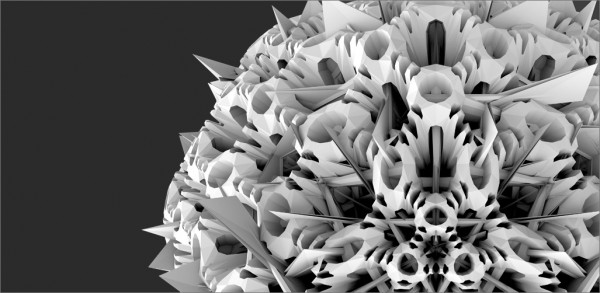
The Platonic Solids project by computational architect Michael Hansmeyer
explores how a purely operations-based geometric process can generate
complex form. Rather than studying the possibilities in combining
numerous primitives, this project examines the potential inherent in a
single primitive given an appropriate process. It takes the most
primitive forms, the platonic solids, and repeatedly employs one single
operation – the division of a form’s faces into smaller faces – until a
new form is produced.
All of the forms shown are generated using the same single process,
only the variables that control the process’ division operation are
allowed to change. This single process affects both the form’s
topography and topology. It influences attributes such as the degree of
branching, porosity, and fractalization – just to name a few. The
process also works at multiple scales: it affects not only the overall
shape, but it determines the surface development as well as the
generation of miniscule textures. The resulting forms display a novel
aesthetic and an astounding complexity that largely defies attempts at
reductionism.
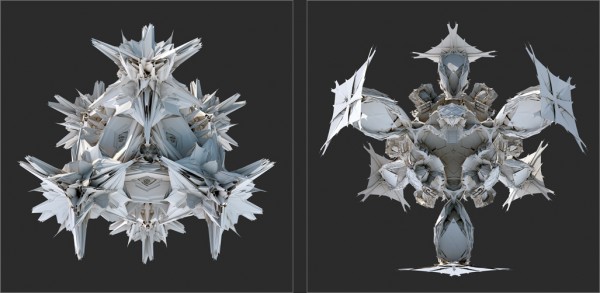
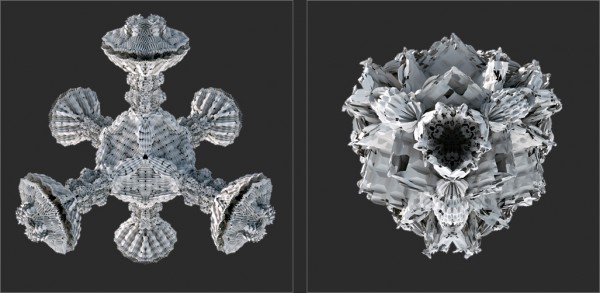
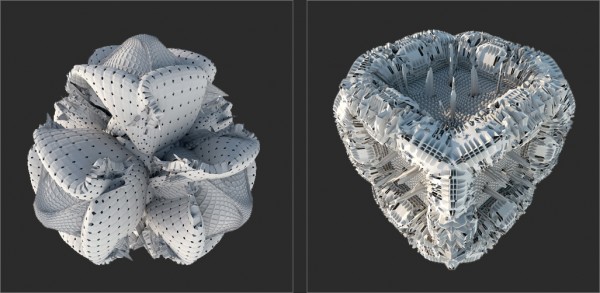
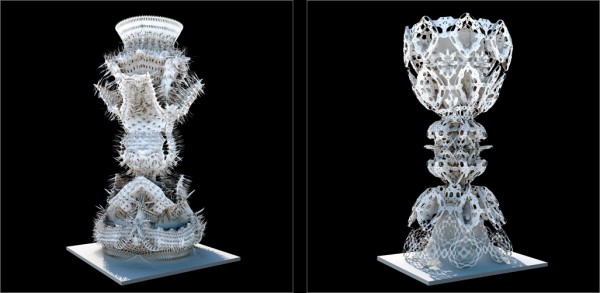
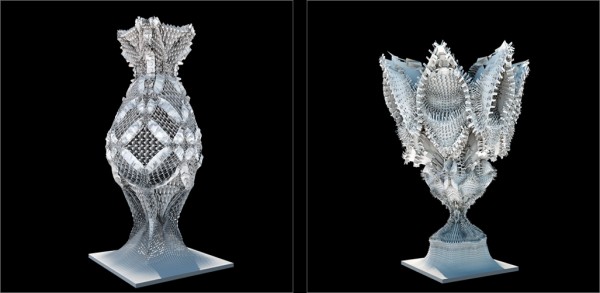
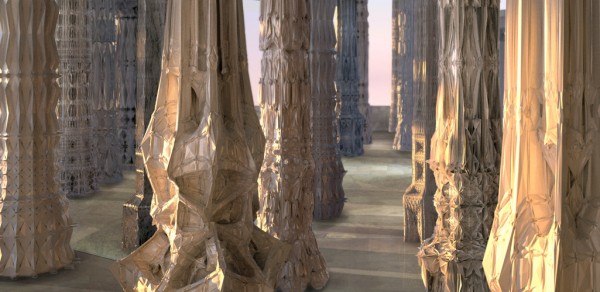
This project by computational architect Michael Hansmeyer
involves the conception and design of a new column order based on
subdivision processes. It explores how subdivision can define and
embellish this column order with an elaborate system of ornament. An
abstracted doric column is used as an input form to the subdivision
processes. Unlike the minimal input of the Platonic Solids project, the
abstracted column conveys a significant topographical and topological
information about the form to be generated. The input form contains data
about the proportions of the the column’s shaft, capital, and
supplemental base. It also contains information about its fluting and
entasis.
The input form is tagged to allow the subdivision process to
distinguish between individual components. This allows a heterogeneous
application of the process, with distinct local parameters settings. In
addition to distinguishing among tagged components, the process
parameters can be set to vary according to the input form’s topography
as well as its topology. Finally, an environmental specification of
parameters is possible to allow regional phenomena to occur.
The result is a series of columns that exhibit both highly specific
local conditions as well as an overall coherency and continuity. The
ornament is in a continuous flow, yet it consists of very distinct local
formations. The complexity of column contrasts with the simplicity of
its generative process.
A full-scale, 2.7-meter high variant of the columns is fabricated as a
layered model using 1mm sheet. Each sheet is individually cut using a
mill or laser. Sheets are stacked and held together by poles that run
through a common core. The calculation of the cutting path for each
sheet takes place in several steps. First, the six million faces of the
3D model are intersected with a plane representing the sheet. This step
generates a series of individual line segments that are tested for
self-intersection and subsequently combined to form polygons. Next, a
polygon-in-polygon test deletes interior polygons. A series of filters
then ensures that convex polygons with peninsulas maintain a mininimum
isthmus width. In a final step, an interior offset is calculated with
the aim of hollowing out the slice to reduce weight. While the mean
diameter of the column is 50cm, the circumference as measured by the
cutting path can reach up to 8 meters due to jaggedness and frequent
reversals of curvature. The initial prototype uses 1mm grey board. Tests
using ABS, wood, as well as metal are under way.
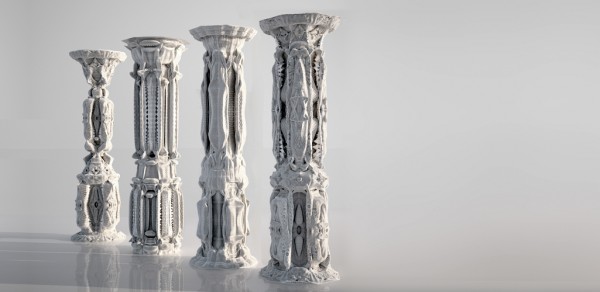
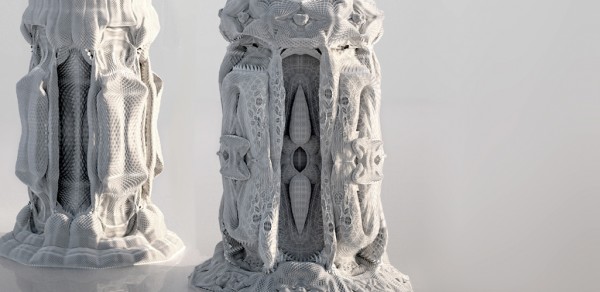
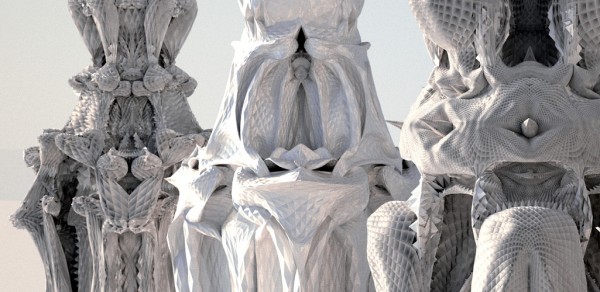
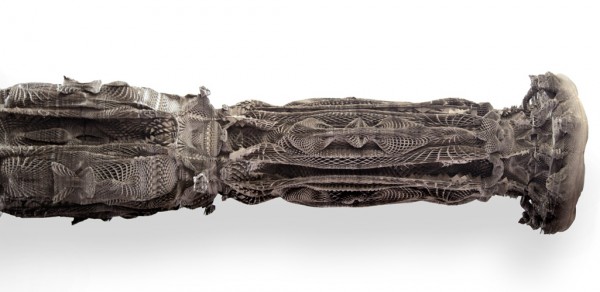

Источник: http://www.evolo.us/architecture/algorithmic-column-with-six-million-faces-michael-hansmeyer/ | 
